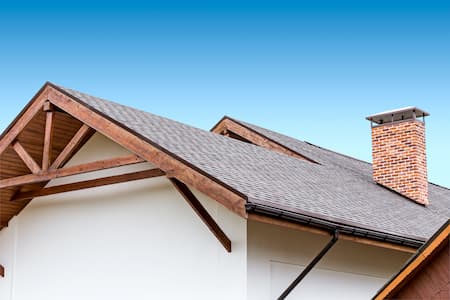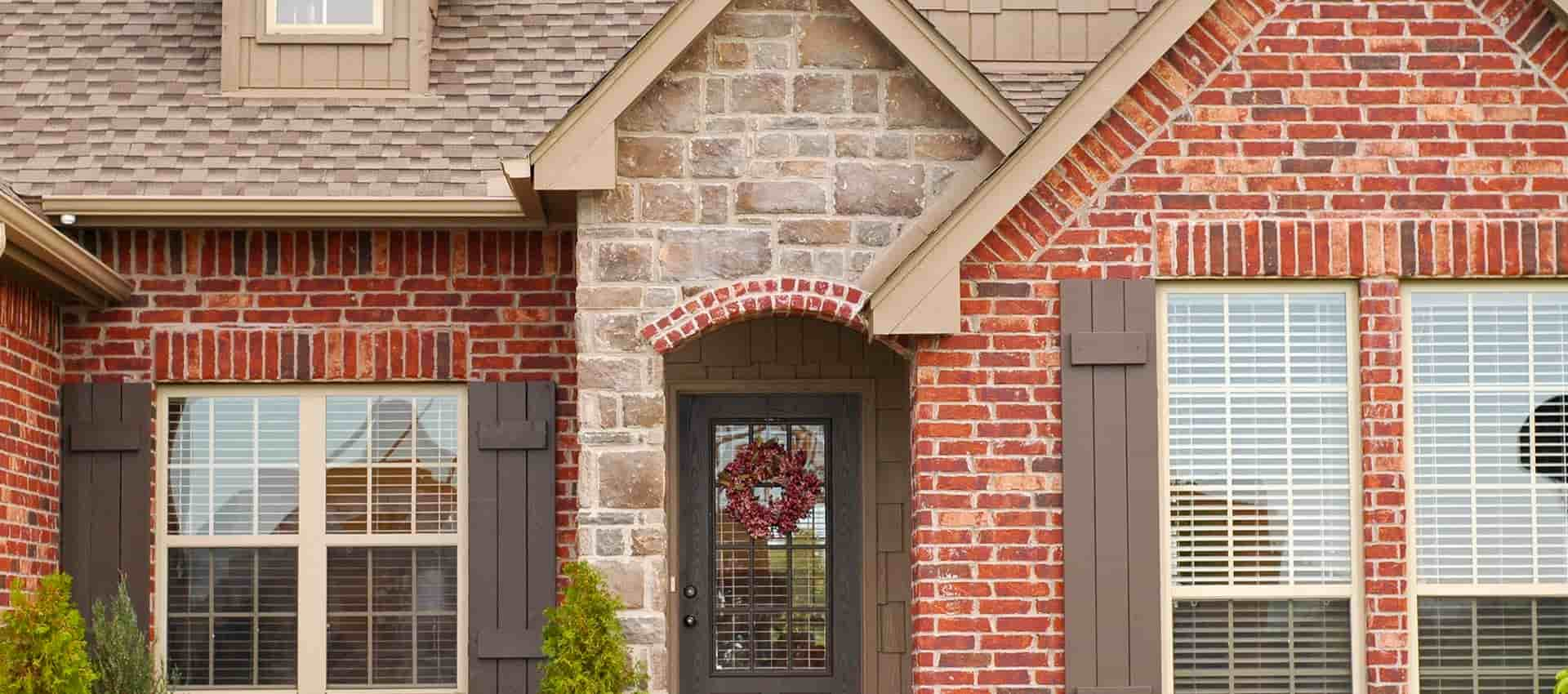What Causes Black Streaks & How Soft Washing Fixes Them

If you see dark, grimy lines running down your shingles, you are not alone. Homeowners across the metro deal with it every season. Those stains are common, and the best fix is professional residential pressure washing that uses a soft wash roof process. For fast, safe roof cleaning in Oklahoma City, Okie Power Washing is here to help.
Black streaks are living algae, not just dirt. The main culprit on asphalt shingles is a blue-green algae that feeds on the limestone in modern shingles. Oklahoma City’s warm summers, spring rains, and shaded roofs in areas like Nichols Hills, The Village, Bethany, and Edmond make perfect conditions for growth. Wind carries spores from roof to roof, so once it shows up on your block, it tends to spread.
Why Your Roof Gets Black Streaks in Oklahoma City
Our weather swings quickly. Humid spells after a thunderstorm week, then long hot afternoons. Moisture lingers on north-facing slopes and under tree cover. That mix lets algae settle, spread, and stain. Dust from red clay winds can make streaks look even darker by clinging to damp shingle surfaces.
The Science Behind the Stains
The organism you see as streaks forms a dark, UV-resistant coating to protect itself from the sun. It collects in vertical patterns because rain carries the cells downhill. Over time, it holds moisture against the roof surface. That moisture can encourage other growth like lichen, which grips granules tighter.
Shade, Heat, and Neighborhood Factors
Tree-lined streets in places like Crown Heights or Quail Creek give welcome shade, but shaded sections dry slowly. North and east slopes tend to streak first. Homes with multiple levels, dormers, or valleys have pockets where leaves gather. After spring storms, these areas stay damp longest, which speeds up discoloration.
Why Blasting With Pressure Is the Wrong Move
Never use high pressure on asphalt shingles. Strong water force can strip protective granules and shorten roof life. It may push water under shingles and into the attic. Many shingle makers caution that aggressive cleaning can risk warranties. A gentle process that kills growth at the root is the safer route.
What Soft Washing Is and Why It Works
Soft washing uses very low pressure combined with a roof-safe cleaning solution designed to target algae and biofilm. The solution does the heavy lifting while the water simply delivers and rinses it away. The approach treats the stain at the cellular level, so it fades out and stays away longer.
Low Pressure With Targeted Chemistry
Think of it like washing a delicate garment. You do not scrub hard. You soak, lift, and rinse. A professional soft wash applies the right mix to break the bond between algae and shingle granules. After a proper dwell time, a gentle rinse reveals the original color.
Experienced techs plan the rinse path, protect landscaping, and control runoff. Downspouts, gutters, and nearby surfaces are managed so the solution goes where it should. The focus is on restoring the roof without stress to the home’s exterior or yard.
What Homeowners Notice After a Soft Wash
- Cleaner, brighter shingle color that improves curb appeal
- Even tone across the roof, not just spot cleaning
- Slower return of streaks because the source is treated
- Better function of reflective shingles since the surface is clear
Many roofs look years newer after treatment. Neighbors often assume a replacement happened when it was actually a careful cleaning.
How Soft Washing Protects Your Roof Investment
Algae alone will not suddenly cause leaks, but it does hold moisture that encourages other organisms to grab onto shingles. When lichen roots in, it can tug at granules. As streaks spread, the roof heats unevenly in the sun. That uneven heating can speed wear. Soft washing breaks this cycle and extends the clean life of the roof surface.
Signs It Is Time to Clean
- Dark trails are visible from the street or driveway
- North or shaded slopes look older than the rest of the roof
- Gutters show dark runoff after rain
- Lichen or moss patches are starting near valleys or vents
If you notice a pattern that gets darker after each rain, you are likely seeing active growth. A timely cleaning stops it before it anchors deeper.
What to Expect on Service Day With
Our team confirms roof access, walkways, and vehicle placement. We set up safe work zones, protect plants, and check water supply and drainage. The technician applies a roof-specific soft wash mix, then monitors dwell time so stains lift without stress to the shingles. A controlled, low-pressure rinse follows. Valleys, vents, and skylight edges get a careful final pass.
Keep people and pets away during treatment and while surfaces are wet. The roof, ladders, and walk paths can be slick until everything is rinsed and dry. We post rinse where needed and leave the property clean.
Local Factors That Influence Cleaning Frequency
Every property is different. In tree-heavy areas near Lake Hefner or along creeks in Moore and Yukon, shade speeds regrowth. Homes near busy roads collect more dust that helps algae cling. After a month of frequent storms, roofs can streak faster. On average in our climate, a properly treated roof stays clean noticeably longer than a simple water rinse.
Soft Washing vs. Simple Rinsing
A hose or rain might lighten fresh pollen, but it will not solve embedded algae. Soft washing removes the stain at its source. The difference shows most on long, north-facing slopes where streaks tend to be darkest. A correct mix, low pressure, and a patient rinse produce a consistent finish.
Protecting Your Landscaping During the Process
We pre-wet shrubs and flower beds, manage downspout flow, and use controlled application to avoid overspray. Tarps and shields go in tight spots. Final rinses bring plant beds back to their normal pH. Your yard matters as much as your roof, so the plan covers both.
How Long Results Last in OKC
In Oklahoma City, results vary by shade, roof pitch, and weather cycles. A clean roof typically holds its look for a good stretch when soft-washed with the right solution. After heavy storm stretches, expect a light dust film that regular rain will remove. If trees overhang the roof, trimming can help it dry faster after storms and morning dew.
Common Myths About Roof Streaks
Streaks do not always mean the roof is failing. They do not require tearing off shingles. They are also not just “dust lines.” Because the stain is biological, it needs a targeted treatment. That is why a soft wash is the recommended approach.
Why Choose a Pro for Roof Cleaning
A trained team brings safety gear, roof-specific tools, and the right chemistry. That protects your shingles, gutters, and siding while restoring the roof consistently from ridge to eave. It also reduces risk for you and your home compared to climbing ladders or walking a pitched surface yourself.
Ready to See Your Shingles Again?
Clean, even shingles change the whole look of your home. Call Okie Power Washing at 405-471-9600 to schedule a soft wash roof cleaning. Or book a time through our service page to get your project on the calendar in just minutes.

